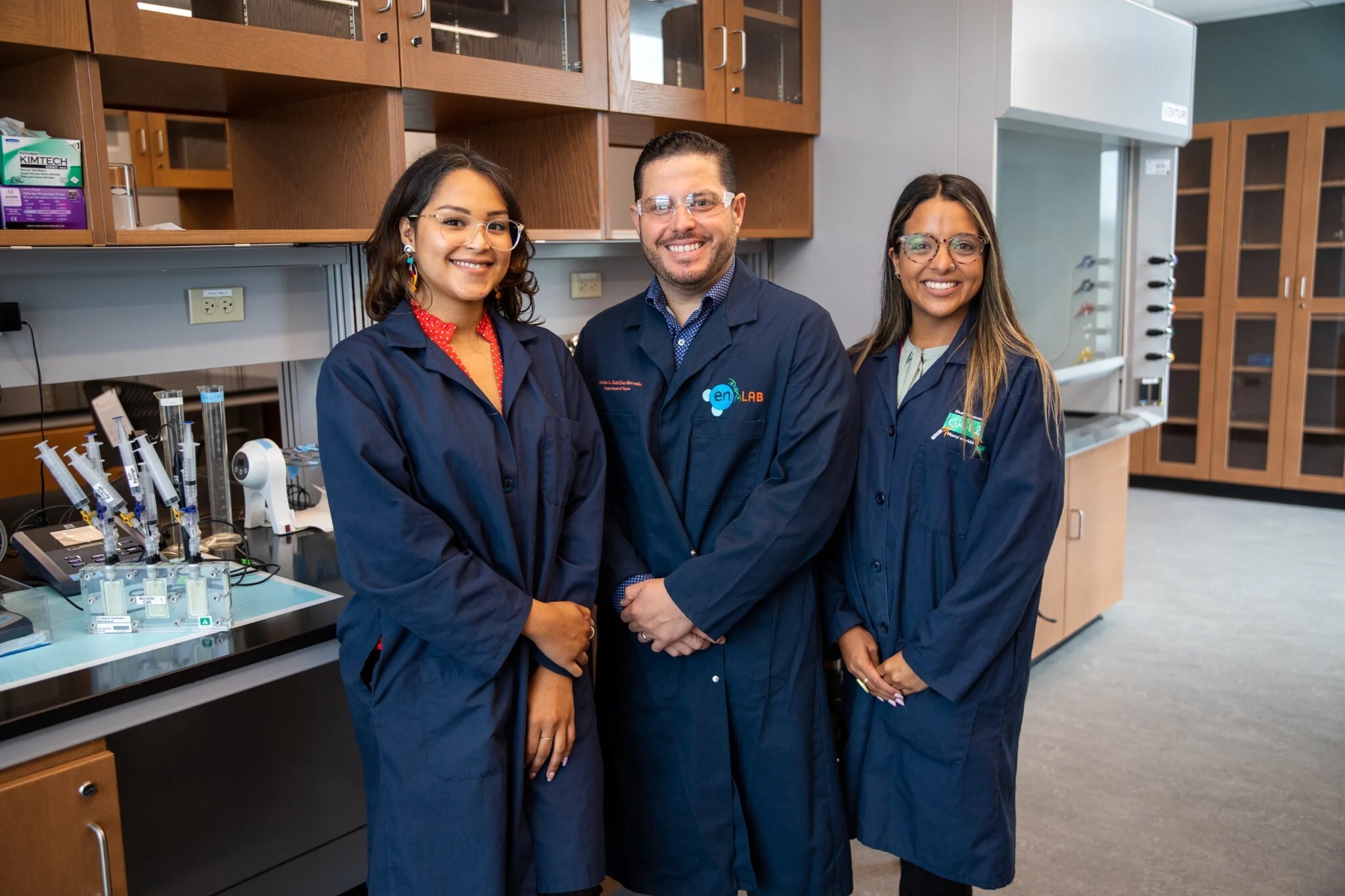Breaking News
Science and Technology
NASA Boosts STEM Research with $45M to Minority Institutions
Robert Tavares
May 10, 2024 - 20:58 pm

Pioneering Partnerships: NASA Grants Inject $45 Million to Bolster Research at Minority-Serving Institutions
In a groundbreaking announcement from the nation's capital, NASA declared its commitment to nurturing scientific research and education within minority communities by granting a substantial sum to a selection of distinguished higher-education establishments. On May 10, 2024, the announcement revealed that an impressive $45 million would be divvied up among 21 deserving institutions, the goal being to enhance their research capability and infrastructure.
This laudable initiative rises to meet the increasing demands for vastly diverse minds in science, technology, engineering, and mathematics (STEM) fields. It is a result of the Minority University Research and Education Project Institutional Research Opportunity (MIRO) and the Established Program to Stimulate Competitive Research (EPSCoR) grants, programs directly nurtured by NASA's Office of STEM Engagement.

A glimpse into the future of space exploration through the work at the University of Puerto Rico-Río Piedras. Credits: NASA
Unveiling the Candidates for Progress
Among the awe-inspiring endeavors NASA supports is an image capturing an ambitious team from the University of Puerto Rico-Río Piedras in the midst of discovery. These trailblazers, doctoral students Liz Santiago-Martoral and Alondra Rodriguez-Rolon, alongside their mentor Professor Eduardo Nicolau, are deep in research aimed at developing a more efficient water recycling system for future space missions. Their cutting-edge experiment, visible to the left of the group, exemplifies NASA's commitment to fostering innovative research and bettering humanity's footprint in space.
Elevating Technological Capabilities: Collaborative Efforts
Torry Johnson, NASA's deputy associate administrator of STEM Engagement Programs, praised the partnership established through the MIRO and EPSCoR awards. These grants, according to Johnson, enable institutions to push the technological envelope, making strides in competitive research. The ripple effect is the creation of invaluable opportunities and the cultivation of rich, diverse experiences within STEM fields. This synergy between education and practical application embodies NASA's strategy for strengthening America's position in space science and exploration.
MIRO Awards: Fuel for Innovation
Seven minority-serving institutions have claimed approximately $5 million each across a five-year term, spanning a spectrum of research topics crucial for NASA and national priorities. These awards signify NASA's drive to escalate research capabilities in minority institutions, honing in on areas of strategic importance that align with NASA's lofty missions.
The Trailblazing Seven
Exploring the arena of microplastics, Alaska Pacific University boasts plans for its own Microplastics Research and Education Center. California State University in Fullerton similarly sets its sights high with the SpaceIgnite Center for Advanced Research-Education in Combustion. From the heart of the Big Apple, City University of New York, Hunter College introduces the NASA-Hunter College Center for Advanced Energy Storage for Space, a beacon for innovative energy solutions.
In Tallahassee, Florida Agricultural and Mechanical University is fusing industrial relevance with academia with its project on Integrative Space Additive Manufacturing, encompassing an emerging scope of NASA-related materials research and education. The New Jersey Institute of Technology in Newark zeroes in on solar activity, with its AI-Powered Solar Eruption Center of Excellence in Research and Education.
Down south, the University of Houston proposes the NASA MIRO Inflatable Deployable Environment and Adaptive Space Systems Center, embarking on pioneering the design of space system structures. Last but certainly not least, the University of Illinois in Chicago aspires to reshape space exploration through their Center for In-Space Manufacturing: Recycling and Regolith Processing.
EPSCoR Awards: Pushing Boundaries Regionally and Beyond
NASA extends its investment further with partnerships designed to seed advancements in research infrastructure for regions and states that are traditionally less represented in competitive aerospace research domains. This strategic endeavor aims to balance the scales of research development nationally while inspiring regional innovation in aerospace fields.
Fourteen Ambitious Institutions
The EPSCoR awards pursue this ambition by granting up to $750,000 to 14 institutions, bolstering a three-year research and development spree. Intriguing projects such as the Development of a Lagrangian Stability Analysis Framework for High-Speed Boundary Layers by the University of Mississippi in University stand out.
The University of Alabama in Huntsville is poised to test the agility and performance of large area detectors for STROBE-X, while Louisiana State University in Baton Rouge is delving into the intricacies of Colloidal Assembly. West Virginia University in Morgantown joins the action, bringing gravitational-wave astronomy to the space age with their Waveform Modeling of Black-Hole Binary Coalescences.
Puerto Rico shines again with its University in San Juan advocating for high-energy, cycle-stable sulfur-based batteries, a proposition with the potential to revolutionize NASA Space Missions. In comparison, the desert's intellect—Desert Research Institute in Reno, Nevada—is set to embark on lunar and Martian missions, deploying autonomous robots with a human-in-the-loop for pre-colonization.
Oklahoma State University in Stillwater, Iowa State University in Ames, and the University of Alaska Fairbanks each present unique strategies, from biosignature detection to non-GPS navigation systems to synthesizing seismic and wind noise data in extreme terrestrial environments.
Challenges in areas such as astrophysics, climate change detection, and buffer-free communication technologies are on the agendas of the University of the Virgin Islands in Charlotte Amalie, the University of Hawaii at Manoa, and the University of Arkansas in Little Rock. South Dakota School of Mines and Technology in Rapid City is also joining the ranks with high-resolution soil moisture retrieval utilising deep learning and satellite data that promise unparalleled advancements in analyzing Earth's climate changes.
Both MIRO and EPSCoR awards harbor the essence of NASA's STEM engagement, striving to fortify the United States' infrastructure in scientific research and education. These programs not only nourish NASA’s quest for knowledge but also ensure a sustainable and diverse roster of adept individuals to lead the charge in future space missions and related technology sectors.
For readers intrigued by the prospect of enriching STEM research and education, and how these NASA-supported programs are trailblazing a more inclusive scientific community, further information is readily available. By visiting NASA STEM, one can delve into a broader view on the initiatives fostering the next-generation workforce, ready to tackle the challenges of space exploration and beyond.
Conclusion
As America gazes forward to new horizons, it becomes evident that space science is not just a playfield for groundbreaking discoveries but also a canvas for inclusive growth and diversity. With these strategic grants, NASA cements the reality that the future of space exploration will emanate from a rich tapestry of cultures and ideas. This initiative does more than just allocate funds; it ignites a new era of innovation, where every mind has the potential to soar among the stars.
In Washington on this pivotal day, NASA's gesture is a triumphant testament to the agency's ongoing mission: uplift the individuals and institutions that will boldly take us to the frontiers of space. The stars await, and thanks to NASA's visionary investments, a growing constellation of researchers are ready to explore them.
(NASA, PRNewswire)
defense briefing© 2024 All Rights Reserved




















